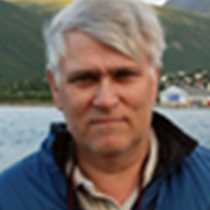South Shetland, Snow Island
WELCOME TO ANTARCTICA! Right before breakfast those up on the bridge had the first sight of land, or rather to say, ice-covered islands. We are approaching Snow Island, in the southwestern part of the group of islands named South Shetland.
Stepping outside you were able to feel that we had left “balmy” South America behind and arrived to the frozen continent, covered with ice and snow. Outside there was a brisk breeze and snow was in the air. Nipping cold!
We are following the trail of the first human eyes to ever see the famous Terra Incognito Australis. It was here Antarctica was first witnessed. Captain William Smith penetrated far south in the Drake Passage to avoid the westerly winds, on his way from Montevideo to Valparaiso. Suddenly in February 1819 he saw land, an ice-covered island. He reported his sighting back in South America but no one showed any major interest. Again in October 1819 he was back and now he landed and claimed the new land for Britain. Terra Incognito Australis had finally been seen, although it was not yet known as a continent.
By 1820 / ‘21 several ships arrived to South Shetland, sealers from northeast U.S. and Britain, to hunt the Antarctic fur seal. In a few years the whole fur seal population was wiped out. Estimates mention two million killed in four seasons!
Soon we were in our fleet of Zodiacs heading for land. It was a nice feeling to stand on solid rocks, after the Drake Passage crossing. Although this passage counts as one of the best ever and seas couldn’t have been flatter!
At the beach, we got our first taste of Antarctic wildlife. Soon we were surrounded by elephant seals; weaned and maybe four months old, and almost ready to go to sea to explore the deep ocean. Further up the beach Weddell seals were hauled out. In the water by the beach, leopard seals were patrolling and some even showed almost too much interest in our rubber boats. At recap, our dive team showed us some fantastic underwater film with the seals playing with the underwater camera and boat. We also had our first penguin encounter with some Gentoo penguins.
After lunch, we ventured further into the Antarctic Peninsula and on to Bransfield Strait for a visit to Deception Island. During the repositioning, Greg Marshall, from National Geographic, gave us an introduction to the development and uses of his invention, the Crittercam.
Soon after the presentation, we made an approach to the huge caldera at Deception Island through Neptune’s Bellows and took a brief look into Port Foster. At Whalers Bay, the old whaling station was covered with fresh snow. The station was active from 1907-31 and from 1945 was used by the British as a base for the Falkland Island Dependency Survey (FIDS) until a major volcanic eruption in 1970 totally destroyed the area.
Before Captain’s Dinner we all gathered in the lounge and enjoyed the Captain’s welcome cocktail party, including introductions of the crew. During dinner, we slowly made our way to the last destination for the day, a visit to Lindblad Cove. We are now almost near midsummer and very close to the Antarctic Circle. So we have nearly 24 hours of daylight and the after-dinner event did not disappoint!
Soon we were surrounded by icebergs and glaciers and spectacular light. The “Antarctic angels” – snow petrels – came sweeping in front of the bow.
We’re off to an amazing start! Today turned out to be an incredible day of exploration of the Great White Continent, Antarctica. No one can come here without being touched, even if only here this one day.




